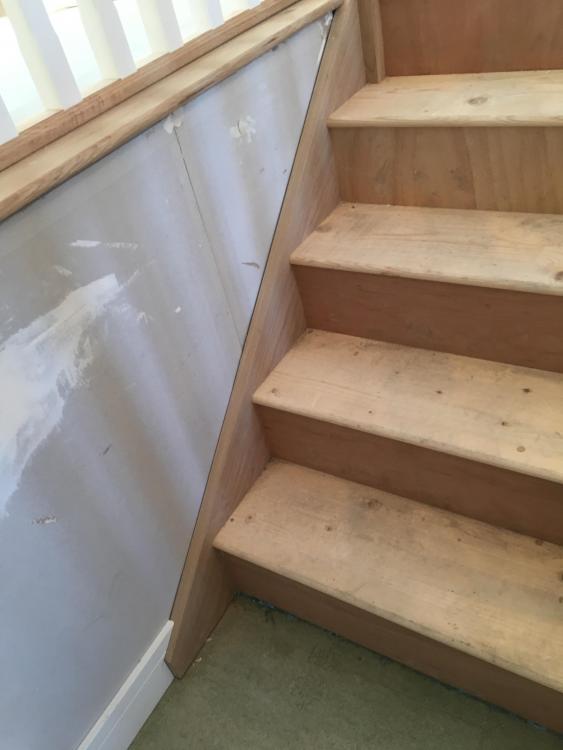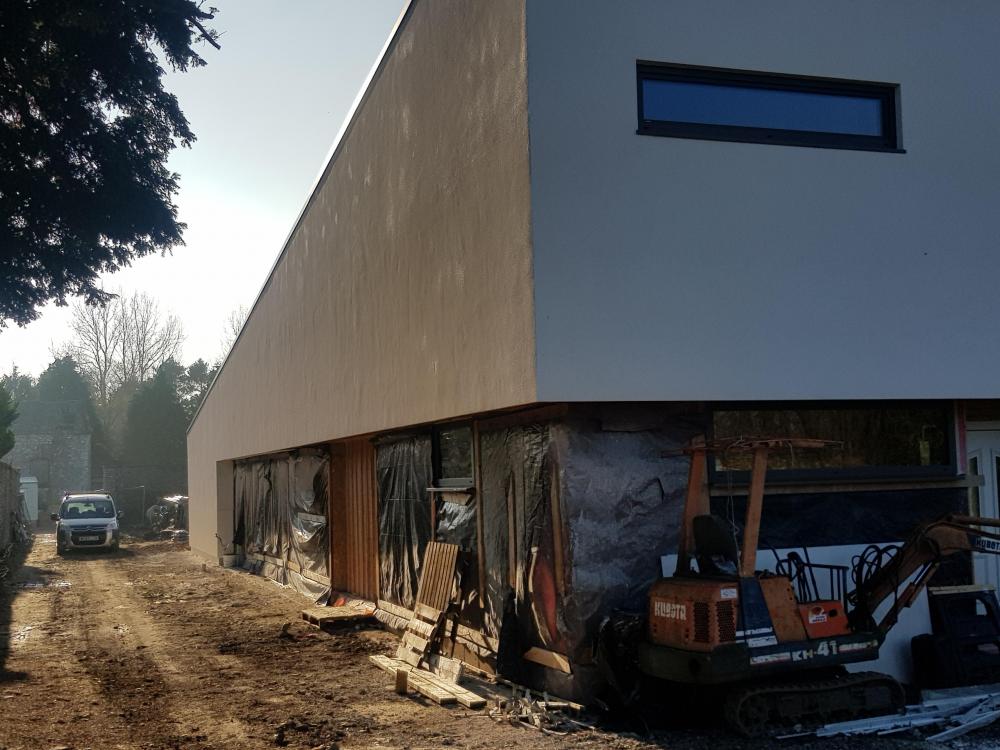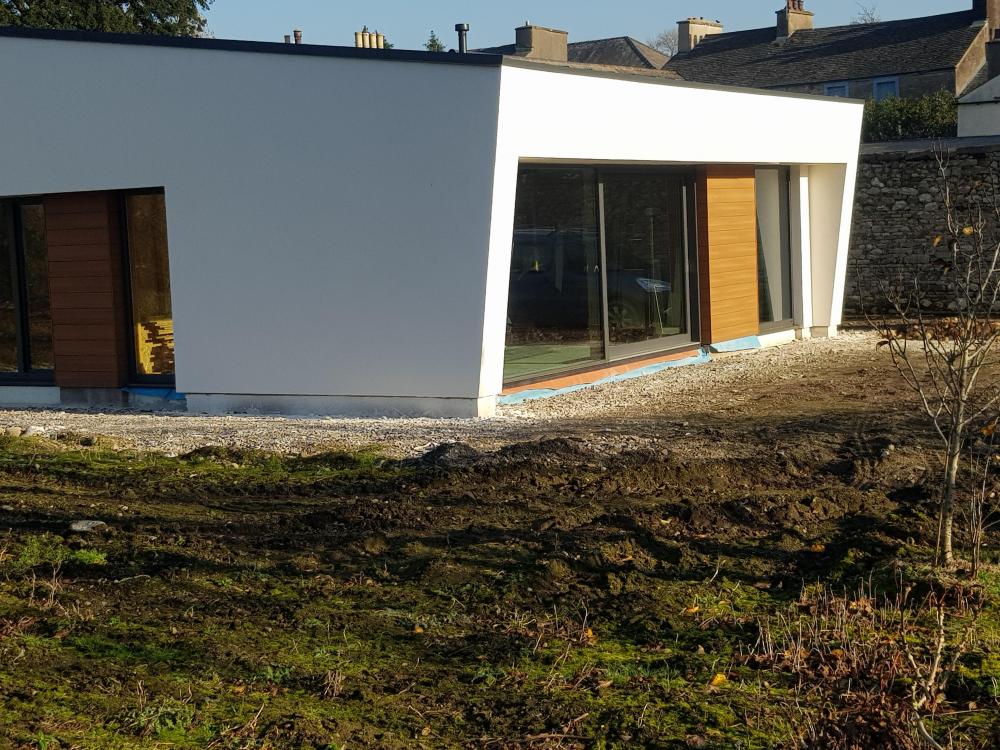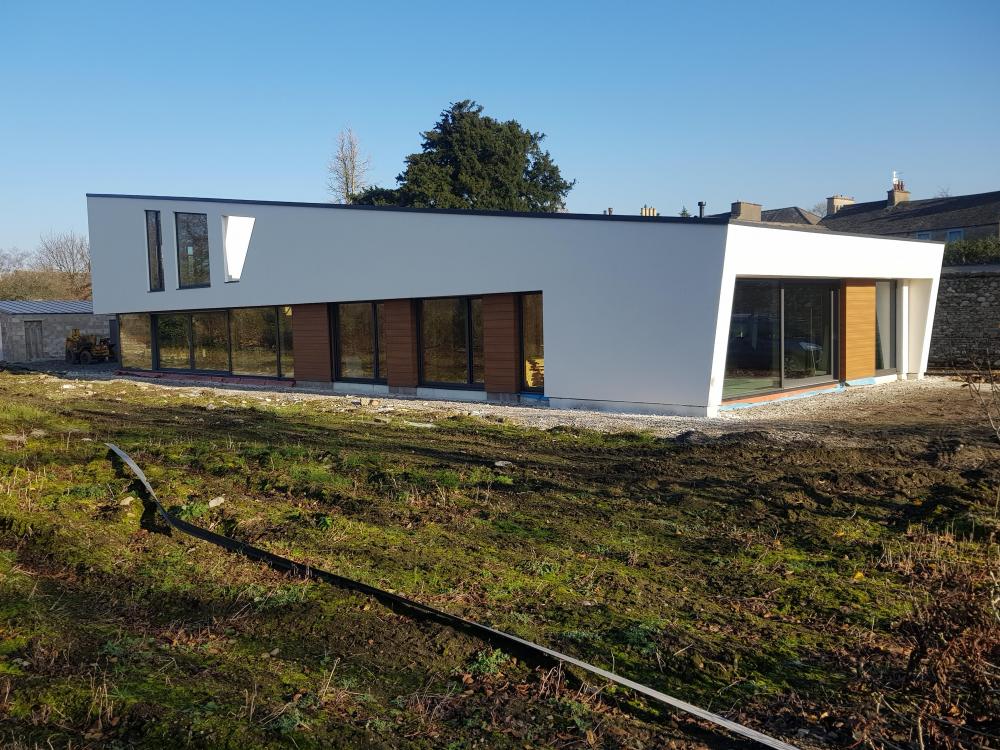Leaderboard
Popular Content
Showing content with the highest reputation on 11/18/18 in all areas
-
My impression is that some people are concerned that what looks like a strange oversight is still in existence, even if only on a small number of units. This is especially concerning if Sunamp-trained people aren't getting the installation right. It may be that people's fears are unfounded, but if a minor problem still recurs long after it's been identified, I don't think it's unreasonable for people to explore what, if anything, this says about the product or the manufacturer. As someone said, if your washing machine developed a bulge after installation, you'd be concerned no matter how trivial an issue it was or how easy it was to fix. I think we can all see from the discussion that it's a minor issue in the scheme of things, but why is it happening at all? You say yourself that they've probably crammed too much into the space allocated. So why haven't they redesigned it to avoid this problem? Again, there may be a good answer, but the question isn't unreasonable.5 points
-
4 points
-
3 points
-
2 points
-
A lot of people won't have the dexterity/engineering acumen to carry out these mods if the installer hasn't. They shouldn't have to call the installer back or if they do Sunamp should pick up the tab. They need to sort this pdq or lose potential customers. @Barney12's experience suggests there's more to the issue maybe than just trimming.2 points
-
Today our roof lights were installed. We are pleased with the finished product and how they fit. The blue sky and sunshine helps of course. Almost helped take the edge off the unexpected contract lift costs (£1380 in the end, but we have managed to avoid the additional VAT and we got him to lift some roof trusses off the scaffolding which saved a job). Their man on site today admitted that it had taken a long time to get to this point. Not wrong! The photos will hopefully do them justice. Already they make such a difference to the light inside the house. And the feature window (circular on the top, octagonal currently from inside) in the full height entrance hall is really fantastic. Any thoughts on how to get the internals finished on this octagonal light? I was wanting to make it circular (and the window company advises this so that we don't get any issues with condensation on the visible frame (which would be covered by the insulation if we did make it circular).1 point
-
Not at all. I’ve had to cut these out and resolder many times. Tbh, if it’s a like for like swap then just use the nuts and olives that are there imo. If it ain’t broke, etc etc.1 point
-
Brass in the valves, as they’re fine pitch threads and you get a lot more torque with far less spanner yanking. Copper crush very quickly with the fine thread fittings.1 point
-
The point was to use the wifi calling option so your phone contract minutes can be used without a mobile signal if you have wifi available, and you can send and rciv texts by wifi as well. Definitely works out cheaper for calls than the landline.1 point
-
Typical standby time for most smartphones is 10 - 15 days. I absolutely pummel mine and only need to charge it every 2 days or so.1 point
-
But any smartphone battery will also last a month if you only switch it on once a week.1 point
-
1 point
-
You want to look into that a bit more. I was given a 2 year old Samsung Smart phone. It is now on a £5 per month contract with O2. Not unlimited but enough minutes for all my call needs. I don't ever use the landline now unless it is for an 0800 number (which peversely you have to pay for on a mobile). The £5 per month for the mobile is way cheaper than BT can offer a "call package" for and in any case we were paying about that per month for metered landline calls with them. I don't generally use the phone for anything other than phone calls, the exception being I have Open CPN chart plotter on it for when out on the boat.1 point
-
No, it sounds like they offer multiple options. I've just checked with my wife and she definitely doesn't use her phones for codes, just the hardware hash generating device which they supply free. I have exactly the same setup for my HSBC business account. Nothing at all happens on or via my phone. I don't even have an HSBC app installed.1 point
-
1 point
-
Close, but not quite - you don't slide your card into the version we have. You log into the website with an ordinary password, then the next step is to enter a verification code generated by the device. I assume the code is just a hash based on the current time, but only the holder of the device can generate the code. When setting up a new payee, you enter the last 4 digits of their account number into the device and it generates a code based on that. In short, you don't need possession of your card to do banking, but you do need the hardware device.1 point
-
This is a little bit off the beaten track, as neither of you would go and buy a combi boiler and fit as it’s a technology that’s unfamiliar to you ( as purchasers not installers ) and you wouldn’t be qualified to do so anyways. Jeremy has DIY’d his after gaining an accreditation from Sunamp, therefore he is competent to do so, joe public is not. Gas fitters received regular addendums to the current regs so they are up to absolute date. Also, they get newsletters from the manufacturers for bugs and fixes / known nuisance faults and dangerous appliance alerts etc. What goes on behind such scenes is NOT public domain. Since becoming involved with Sunamp I have received such updates, I have initiated some responses from concerns I had nearly a year ago, and things changed to that effect and are ongoing as we type. Its early days yes, and yes, in a perfect world, this wouldn’t / shouldn’t happen. The thing that’s missing here is installers / strategic partners of SA are being notified, they are being brought up to speed, they are being told of the bugs and how to correct them and so on, so please let’s not assume they aren’t. ? I for one am ‘in the loop’ and receive such correspondence, and when @Barney12 contacted SA regarding his SA’s getting the 10-month pregnant look he had his question answered before I had a chance to ask myself, just timing, nothing more. They really don’t have that many of these out there in domestic situations, fitted by newbies, and some of those newbies will no doubt not read the manual from cover to cover anyhow, so it would still be easy for this to occur again. Emphasis should be on what’s being done about it, and anyone who’s having units fitted by a good looking bloke can rest assured they’ll be fitted correctly and in accordance with the most recent addendum. You dont take take the cover off a washing machine, as it’s a non user serviceable device. You do take the cover off a SA, but only if you’ve been trained on what to do next. Lets remember it’s a specialist bit of kit, not a set of shelves you can buy and knock up yourself on a Sunday afternoon. When UVCs first came into circulation they were horrendous, ask @MarkA for one and he will confirm that. Then they evolved into reliable efficient units. Bingo. “Progression”. Lets see how SA progress, but it’s still early days. The grievance is that people are paying good money for something they expect to work ‘out of the box’, and I know first hand that @Barney12‘s issues have stopped him boxing off his heating and hot water chapter, but I am fully confident that any issues will be resolved in due course. I do think they should have made the bloody things 30mm wider so the Britney Spears bumps stayed within the confines of the case, rather than being noticeable as they distend. 100% think that was a faux pas on their behalf, but you plonk these in a cupboard and let them get on ( when they’re doing what they’re supposed to that is ) so the it’s not that big a problem as @JSHarris says. @Barney12‘s units, I genuinely think, have suffered from controllers that have not regulated the heat input properly ( nowhere near it in fact ) and that would be a warranty issue imo. SA don’t press release installation information to the public, in the same way other manufactures do not do so either, so nobody would know of these bumps and their resolves if it wasn’t for this thread for eg.1 point
-
I wouldn’t want to start trimming insulation in such a thing. I wouldn’t be very good at it anyway and would have no real idea how much to remove. For something like a Sunamp surely insulation is important, and having just the right amount, ie not removing too much, must surely be important too?1 point
-
1 point
-
I'm with First Direct too. We got our mortgage through them, and had to open an account. I was fully prepared to move once the deal was done, but was so impressed with their service that I stayed. They're simply the most professional organisation I deal with day to day. It's all done by phone, but you get through to them fast and their staff are exceptional.1 point
-
1 point
-
that is really unacceptable --shows how much testing they have REALLY done on production units in service for this to happen--glad my decision to go this way is a year away at least . lest hope by then they have upgraded the units they have sold now as well as new units my guess the "bean counters "have got in on the production models and thinned down the casings both exterior and actual PCM cells --wonder how long they are going to last with continual stress like that before a crack and leakage occurs?--30,000 cycles ? time will tell. number of times that happens in car industry --design engineers do a good job ,then spec is changed in production ,that is the reason for nearly all recalls -"bean counters" changing spec to make things cheaper .BMW is a good example --all these fires from fuse boxs --who in their right mind would have main power to this box transmitted this way --a spade connector it was always going to get hot over time ,thats why alternators swopped from push on to bolt connections 20years ago as electric demand increased i know of no push on blade connector that is rate for 60-80amps . which is what the alternator could put up that wire if everything is on . the cable is fine its 80amp --but should have been a ring eye connector and bolt fitting-- vauxhall had simlar problems with car heaters catching fire --same reason --altering production wiring from that specified in design and range rover --air suspension- height correctors going out of sinc ,so suspension will go up and down like a yo-yo ,then sometimes be ok--cos wiring was dropped in spec and cheap non gold plated pins on connections under wheel arch where sensors are so resistance changes -,so ecu gets wrong data fxxxxg "bean counters just hope SA have more sense1 point
-
I've always found mortgaged buyers easier than cash. Especially FTB they are the best. The problem with cash cash buyers is what they spend on the sundries involved in the purchase is a small portion of their money so they never feel locked in. Meanwhile a thousand pounds could be a big chunk to a 10% depo buyer. As well as that the mortgage process seems to keep the conceyancing wheels well greased.1 point
-
Welcome to the forum, you’ll get loads of help and advice here. When we started our search for the ‘perfect plot’ it took us four years to find it and the plot wasn’t cheap, in fact we ended up buying a house with a large garden in a rural area. We demolished the delapidated house and we’re in the process of building the replacement. The one one thing I’d suggest is that you won’t find your ideal plot advertised in your local estate agents window. You need to decide where you want to live and then get out on your bikes. Cycle around and stop,and talk to people, ask questions about potential building plots, look for old houses on good sized plots, maybe a farm building ripe for a make over, an old commercial establishment you could gain change of use for, you need to think laterally, oh and be willing to do the leg work!1 point
-
The only exception to that might be for a design where the insulation forms an intrinsic part of the airtightness, such as when pressure blown cellulose or a thick layer of a spray foam like Icynene is used. Both these types of insulation are highly resistant to "wind wash", so contribute a fair bit to the airtightness of the structure.1 point
-
My opinionated opinion: airtightness testing should be done before the insulation, let alone the plasterboard, is installed.1 point
-
1 point
-
Google Trespa Pura. It is a man made product which does not need any treatment except a wash down now and then. We do not like it when the wood silver's as we think it would spoil the look of the house. 25sq m cost about £3000 and I fitted it myself.1 point
-
1 point
-
The feedback from SA was that the good folk in production were putting too much insulation in the upper section which was taking up the room for expansion. The units naturally distend a little, but not that it is problematic afaik, but taking away room for upward expansion meant the lids overly distended to a point that they were cream-krackered. They made these VERY tight, ( I imagine for space saving ), prob an inch too tight, but under normal conditions I’m told it’s ‘normal’. Agree with @JSHarris, where they could do with strapping a corset on it for the panickers.1 point
-
Yes they do, it's normal. Not great, but I did look closely at the cause and called Sunamp about it, and it's not a problem. The cause is just a lack of rigidity in the large single PCM cell, and in the design of the case. They have redesigned the lid to try and overcome the distortion in that, but the flat sides of the case do still bow out a bit. Doesn't do any harm, AFAICS, but I'd like to see the case, or perhaps better, the cell casing, made a bit stiffer to prevent this. Personally I'm not losing any sleep over it.1 point
-
Yup. Buy the Pre-insulated pipe, chuck it under the hoos and job done ✅1 point
-
1 point
-
1 point
-
IMHO it's better to try and fit a new, longer, cable to the light. I have a few LED outdoor lights, and they all came with short cables (and no earth connection...) and I replaced the cables on all of them. Not hard to do. I used 3183P 3 core rubber "pond" cable, as it's pretty durable when used outside and fitted the cable gland on the light fittings.1 point
-
yep they are a right pain to get in correctly --gets harder as you get older and eyesight gets worse and fingers get fatter.lol1 point
-
You really need to keep the pairs paired, at least. Personally, I've never bothered with crimping plugs on the end of cables. Rather, in the few places where I've wanted fixed cables I've always put a socket on the end then plugged in a short pre-made lead as required. A lot less stressful, I think.1 point
-
1 point
-
1 point
-
You can get pre-insulated twin pipe for just this sort of job, where you need to run the flow and return from a boiler or heat pump some distance underground: https://www.polypipe.com/housing/pressure-systems/pre-insulated-pipes Laying this before your slab goes down would seem to be a reasonable option.1 point
-
Why would you want another layer of concrete. The hot and cold pipes will sit on the subfloor and will be covered over with a 50mm thick insulation. You can then overboard with your next layer whatever that depth is. Mine was 75mm sand cement screed Dirt cheap near enough cling film polythene 100mm pir 50mm pir to cut upto any pipes for sinks, baths etc. I mixed a very weak screed 7:1 and infilled over so the top sheet sat flush. Radon barrier Sub floor. The thing I didn't like about the liquid screeds is that although they heat up quick they also cool down quick.1 point
-
I don't see the point. The thermafloor is easy to put down and by putting a polythene sheet above the insulation your stopping the screed flowing between the joints in the insulation (if any exist) which would create a thermal bridge. It would want to be incredibly poor workmanship or a very complex shape with an uneven sub floor to justify the thermal bead screed I think. What you could do is increase the thermafloor insulation to 150mm and use a 75mm concrete screed. This would give you an even better u-value while still providing a decent 75mm thick slab for the underfloor heating pipes.1 point
-
Your energy assessor looks to have the correct U-value (comparing the 125mm PUR). To get the same U-value would require twice the thickness of the insulated screed product (0.022 W/mK vs 0.043 W/mK).1 point
-
The first site we were going to buy had a lot of buried archaeology; it was the site of an old water mill dating back to Anglo Saxon times. Two big exploratory trenches had been dug at the expense of the vendor, when they got outline PP, and these found lots of evidence for there being a mill on the site going back well over 1000 years. I proposed using screw piles as a foundation solution, to minimise disturbance to the buried archaeology, but this was rejected. A raft was acceptable, but there was an insistence on an archaeologist being present for all excavations, who would have the authority to call a halt to work and order a full excavation of anything they found, at our expense. I had estimates for this and they were very open-ended. The archaeologist said that they were near-certain that there would be significant finds during any excavation work on site, and that the costs were likely to be at least £20k and could be well over £100k, depending on how long they took to excavate and record everything they found. For other reasons we walked away from the purchase, but I had the strong feeling that we'd have had to pull out over the unknown cost of the archaeological work, anyway.1 point
-
Where we are it used to be the case that archaeology was funded by the County Council and we used to just have to ask the local voluntary archaeology group to visit any sites which were considered of interest. I think we donated about £100 per house. Now it is "developer funded" and it has spawned a whole business and the fees are now about £1000 per house. If the planning condition means that you are not able to reasonably construct foundations and the actual worth of the archaeology is low you can appeal the condition. On the other hand if your site overlies a Roman villa with intact mosaics you may need to think again! Explain to the archaeologist what foundation system you are proposing and why and see what he suggests, as it is you that pays his fees (through gritted teeth no doubt).1 point
-
If is not economical / practical to avoid the stuff underneath, argue this with the archaeologist as unless the finding is of significant importance it should not be an obstacle preventing development. I have had similar with trees in conservation area and they conceded that keeping them was not practical.1 point
-
1 point
-
Forgive me for digressing but if anyone is going to build over “old” stuff why not dig it up and preserve it elsewhere or document it? I think there are too many listed buildings, yes keep a few for historic reference but !!!! (hard hat at the ready).?1 point
-
Pity you couldn’t have the sever pipe route preplanned, their archilogival trench could have followed the same route, save you digging later!1 point
-
But that's a different scenario to what you described in your previous post ("then letting demand (and price) build up before they built a few more."). And some of the blame for what you're now describing has to sit with the LA for not stipulating a defined period in which a development should be completed.1 point
This leaderboard is set to London/GMT+01:00

.jpg.c21f3ac78c9b7efd90cbdcb312744dc5.thumb.jpg.7adcad4c0e384f5ecd7d56b0618df6e5.jpg)

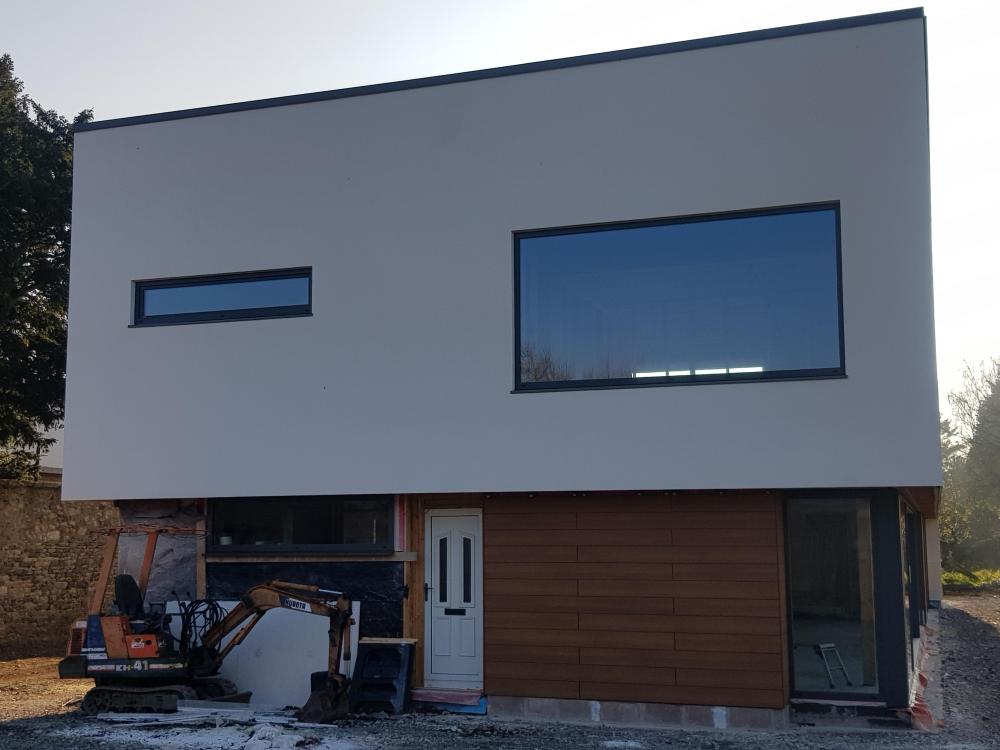
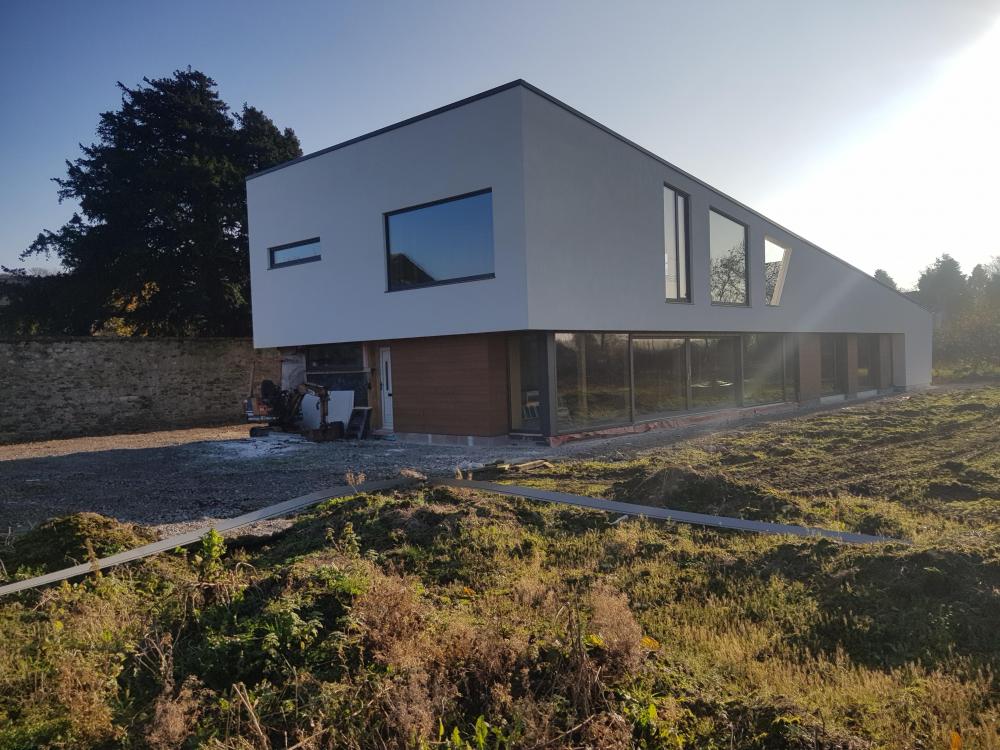



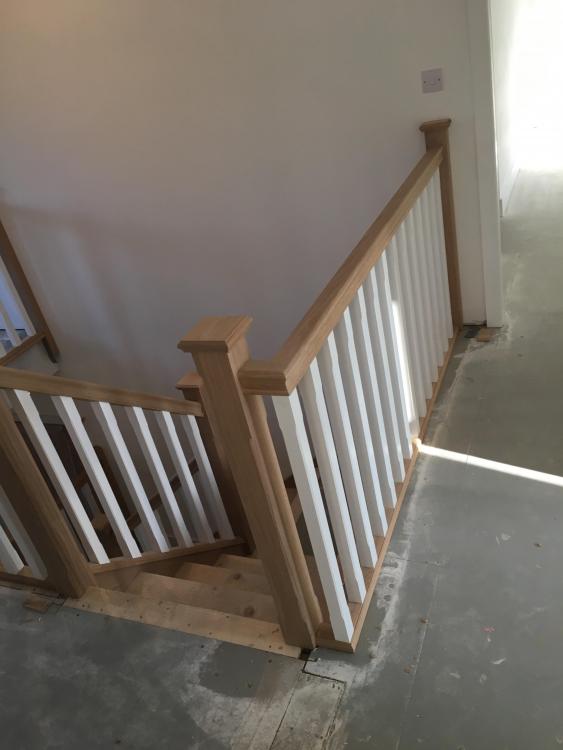
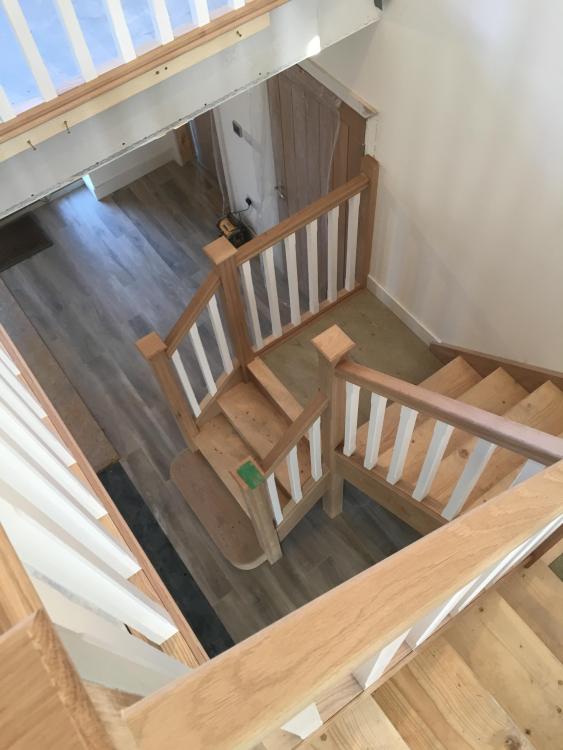



.thumb.jpg.bac90f3bbf6868cf2118d010d936c99d.jpg)

